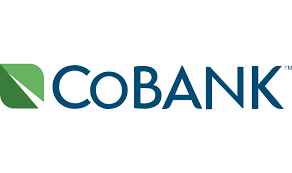The Fed’s battle against inflation amid a resilient U.S. economy has led to high interest rates and a surging U.S. dollar, hurting key segments of the rural economy.
According to a new quarterly report from CoBank's Knowledge Exchange, the combination of the highest interest rate environment since 2007 and a strong U.S. dollar is beginning to take a disproportionate toll on rural industries such as agriculture, forest products, mining and manufacturing.
"The challenge for agriculture and other rural industries that rely heavily on global markets is their export partners simply can’t afford to buy U.S. products,” said Rob Fox, director of CoBank’s Knowledge Exchange, in the company's press release. “When you combine the loss of exports with a general slowdown in the U.S. economy, it’s a double whammy for many businesses operating in rural America.”
Fed officials now expect interest rates to stay higher for longer.
As the U.S. economy outperforms expectations, countries such as Europe and China have fallen short - resulting in the strong U.S. dollar. This makes U.S. exports more expensive and imports cheaper, heavily impacting the rural economy.
Animal Protein and Dairy:
- USDA estimates total U.S. beef output will be down 5% in 2023 and expects an additional 7% decline in 2024.
- Pork cutout values increased 41% from May through July, countering weak prices earlier in the year. Hog prices also rallied, with nearby hog futures climbing 36% from late May through early August. With production rising and seasonal interest fading, markets have since cooled.
- Strong cheese production and slowing dairy exports pulled Class III milk prices down to $13.77 per cwt. However, futures markets indicate the final quarter of the year could be much better, with projected Class III milk prices at $17.30 per cwt.
Grains, Farm Supply & Biofuels:
- Historically low water levels on the Mississippi River, higher barge rates, a strong U.S. dollar and robust export competition from Brazil and Russia are creating major headwinds for the U.S. grain and oilseed export program.
- Acreage for winter wheat planting is expected to be down slightly with prices below expected breakeven costs of production.
- Anhydrous ammonia and potash prices fell 30% and 15%, respectively, during the third quarter. Less fertilizer usage is expected in 2024 as acres shift from corn to soybeans.
- Ending stocks have tightened and are now 17% below the March 2023 peak.
- Renewable diesel and other biofuel capacity is up 26% since January 2023.
Oil:
- U.S. crude oil prices increased 30% in the third quarter, with WTI futures rising from $71 at the start of July to $95 by the end of September.
- High prices are marked by an important re-ordering in global supply, intransigent producers and a global economy that simply won’t slow down.
- Without greater demand side destruction, transportation costs are likely to remain elevated through 2024.











